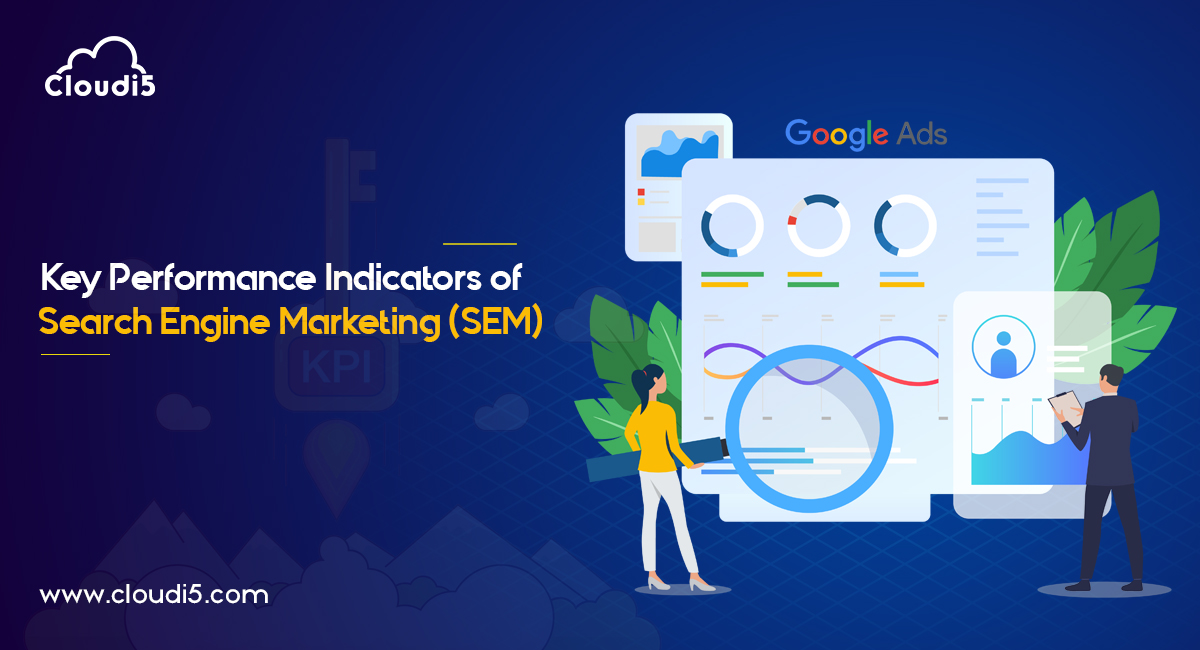
Key Performance Indicators Reflecting The Effectiveness Of Your SEM Efforts
Search engine marketing includes different paid online strategies implemented by businesses to improve the traffic of websites and sales. Based on the budget and nature of your business you can plan the marketing campaigns. Digital marketing practices you opt to ensure a strong relationship with the existing and new users by improving your brand visibility. Paid ads that are placed at the top on SERPs provide a faster reach. Depending on the digital marketing budget when businesses invest in it and plan the strategies well, the conversion rate and ROIs will spike up high remarkably.
The KPIs help you analyze, measure and streamline the digital marketing process to achieve your goals. Let's have look at various key performance indicators that provides an insight into your SEM performance.
Impressions
The CPM (cost per thousand) or impressions rate shows the number of times your ad gets listed on the search engine pages and you pay a price for every thousand impressions. These ads are bought based on the impression, where the payment is processed only on mutual acceptance. You can calculate is by dividing the total number of impressions acquired by the total number of impressions you can acquire. The eligible number of impressions can be obtained from the current ads, quality score, target setting, bids, and approval status.
Clicks
It simply means the number of times users click on your ads to get a product or service. This is the first stage of conversion. The impressions are the ads visible on the search engine which receive clicks and the user gets connected with your website. This action is considered as the goal of PPC campaigns online. The rest depends on the quality and accuracy of the ad contents.
Quality score
The quality score informs the relevancy and quality of your ads, landing pages, and keywords on a scale of 1 to 10. It uses CTR, ad relevance, and landing page experience to rate your ad campaign. A high-quality score reduces the CPC. With this metric, you can understand the user's needs better.
CTR (click-through-rate)
The click-through rate is an important score in digital marketing. It indicates the number of clicks on your ad, or each impression acquires. It reflects the efficiency of the CPM and quality score. A higher CTR means a successful PPC or SEM campaign. The CTR changes depending on the nature of your business and the type of campaigns you place. It is the outcome of every little aspect such as keywords analysis, ad type, ranking position, etc. put together.
CPC (cost per click)
The cost per click (CPC) is the average price paid for each click by the user on your ads. Though a specific budget is specified, the maximum bid is not the final price paid by you as it keeps changing. CPC indicates the exact price paid by the advertiser. Charges for putting clickable ads are influenced by the competitors as the position on SERPs provides higher conversions.
Cost Per Acquisition (CPA)
CPA reflects the actual conversion and you pay for each customer you acquire out of google ads. It is calculated by dividing the total cost of conversions by the number of conversions generated. You can also opt for a targeted CPA campaign setup. Your quality score influences the CPA and indicates the effectiveness of campaigns.
Apart from the above indicators, there are many other google ads tools and metrics to improve your SEM campaigns and reach the target audience. You can evaluate the business conversions with google ads and control them accordingly. As an experienced digital marketing company, Cloudi5 Technologies ensures to analyze and implement necessary digital marketing strategies to boost the sales for their valuable clients.
Trusted By












Leave Comments